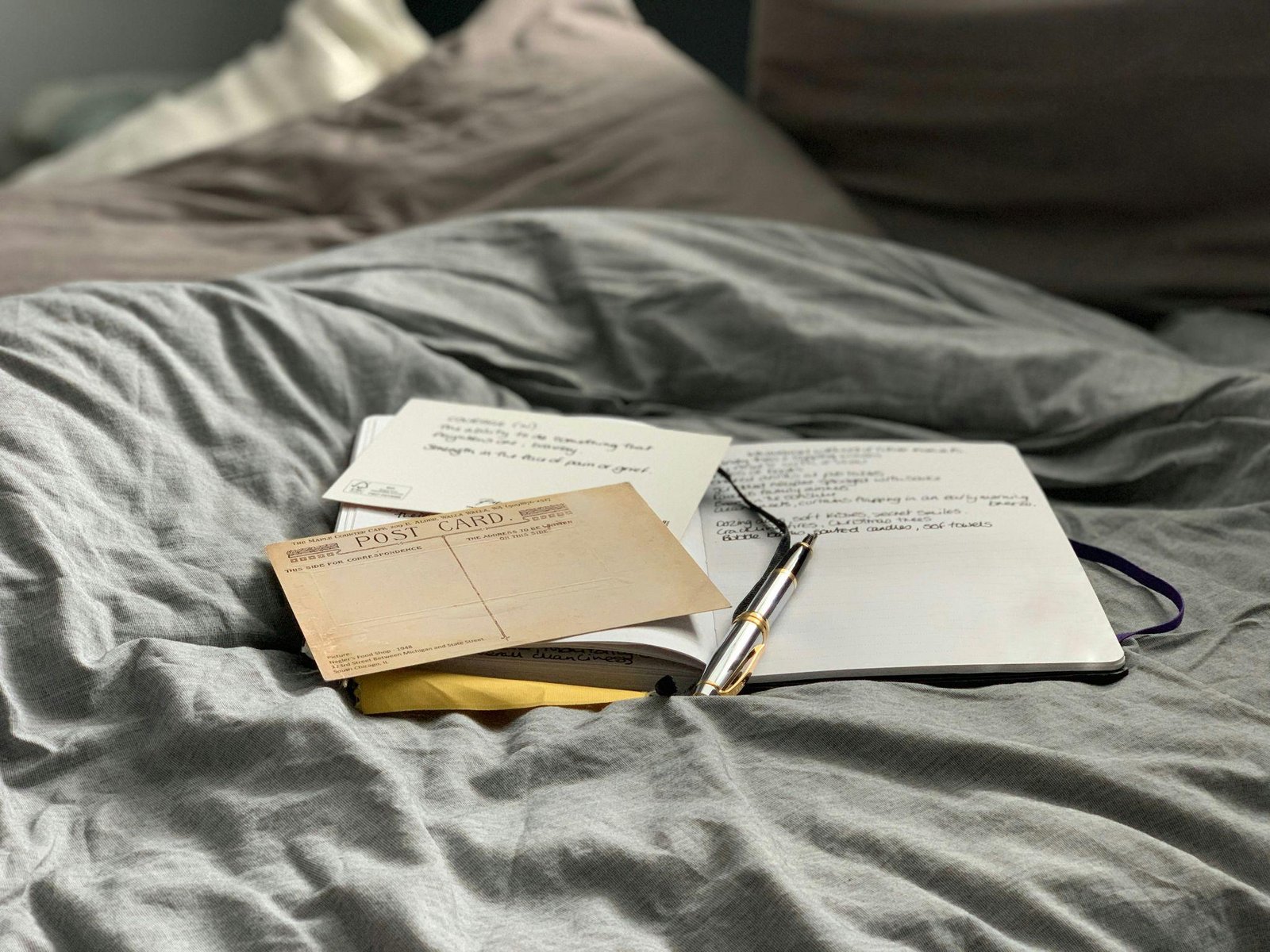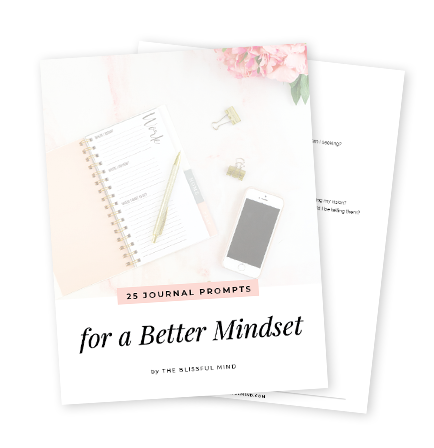From Chaos to Calm: Organizing Your Thoughts Through Journaling In a world where we are constantly bombarded with distractions and an undeniable amount of information, I sense that many of our minds feel like a tangled web of thoughts, concerns, and feelings. The incessant mental chatter leaves us feeling scattered, stressed, and out of touch with the things that we value most.
Journaling provides a way to relieve some of that mental clutter. This timeless practice takes swirling thoughts and untangles them into a meaningful system, creating a pathway from mental chaos to mental calm that has been utilized across cultures by millions of people throughout history.

What is Mental Chaos and Why Does it Matter?
Mental chaos disrupts our lives in so many different ways, and each of us is different in how we experience it, but the reality is that mental chaos is challenging for all of us. Common indications of mental chaos include racing thoughts, excessive worry, and being overwhelmed. All indicate that our mental filing system is in distress; deciding what is important is our biggest challenge.
Mental chaos not only affects our thinking; it disrupts our emotions and even our relationships with those we love, making the quality of life questionable.
What is the Price of Disorganized Thinking?
The experience of unorganized thinking has its costs:
Deciding becomes difficult, and we experience the devastating effects of decision fatigue—when our brains are overloaded—every decision we make seems to take us forever to decide.
We overload the nervous system with thinking instead of engaging restfully in more relaxed activity or sleep—our brain continuities racing with the same distorted thoughts, injuring our body’s rest and recovery stages.
Our creativity declines when unable to think freely due to mental chaos—innovation and problem solving—a mental to-do list has a way of cluttering our mind and stifling creative thinking.
Mental displeasure strains relationships—thinking becomes chaotic and scatterbrained, making it hard to deeply listen to conversations.
Limitations of Traditional Approaches
Many individuals try to organize their thoughts through either wholly mental exercises or periodic conversations with friends. These approaches may be helpful temporarily, but by themselves, they do not provide the organization for sustained behavior change.
Organizing your thoughts cognitively needs a bookended, systematic activity that allows reflection, deliberation, and growth for some time.
The Evidence of Journaling and the Organization of Thoughts
There is consistent evidence for the benefits of journaling for cognitive functioning and emotional regulation. Writing by hand reinforces neural pathways different than typing, thereby developing stronger connections between thoughts and memory.
Writing by hand physically stimulates multiple parts of the brain at the same time, which assists in better information processing and organization.
The Neurological Impact of Writing
Studies using brain imaging techniques have shown that journaling activates the prefrontal cortex, the part of the brain connected to executive function, decision making, and emotional regulation – essentially organizing your disorganized thoughts.
Journaling also expands working memory, or the amount of data we can hold or manipulate in our minds at the same time without being overwhelmed.
Stress-Reduction Connection
Engaging in writing after stressful experiences promotes declines in cortisol and stimulates the parasympathetic nervous system. Biologically, this takes you out of fight or flight mode and into rest and digest mode, which helps clear mental space for more rational thoughts.
Less stress = better organization of thought = better decision-making.
Journaling Styles for Organizing Thoughts
There are different styles of journaling that provide different benefits in organizing thought chaos. Understanding how to use these styles will help you determine which organizational approach will work best for you and your particular personality.
Different styles are useful for organizing mental clutter.
Stream of Consciousness Writing
This style simply means writing continuously without stopping to edit, censor, or organize your writing. Either set a timer for 10 or 15 minutes or just use a sheet of paper to write down whatever comes to mind at the time. The writing nature should be free-flowing, allowing thoughts to immediately be placed on paper.
Stream of consciousness writing will help empty your unorganized thoughts from your brain and often will relieve underlying cognitive patterns or issues you may not have perceived. Stream of consciousness writing can be especially helpful for processing emotional issues related to your mental “noise.”
Structured Problem-Solving Journals
For particular dilemmas or choices, structured journaling provides a more organized approach to organizing thoughts:
Problem identification: Compassionately name the problem that is creating mental clutter in your mind
Evidence-gathering: Identify all facts, feelings, and considerations to take into account
Options Exploration: Brainstorm all potential, viable options without any judgement
Consequences: Consider the potential consequences of each option
Decision Documentation: What did you decide and the thinking that went into that decision
Through this structured approach, all the messy thinking can be dealt with in a systematic way.
Gratitude and Reflection Journals
Daily gratitude and reflection can help organize thoughts around positive experiences while promoting positive change. This process shifts the thinking toward more appreciative and constructive experience and learning instead of chaotic worry.
Our minds naturally create patterns that can organize, reflect and integrate our experiences into meaningful stories rather than random and stressful events.
Practical Techniques for Organizing Thoughts through Journaling

Effective organizing one’s thoughts through journaling requires some techniques designed to maximize the clarity of thinking while minimizing mental resistance. These practical components can help to develop sustainable habits that produce a lasting change.
The critical piece is to find methods that make sense for you and are sustainable and fit into your habits and context.
The Brain Dump Process
When you feel overwhelmed by too much going on in your mind, I recommend starting with a total brain dump. Write everything you are thinking about, rather than trying to organize it or filter it in any way:
Find 15 or 20 minutes without interruption. Gather everything on your mind, and continue writing without stopping to think or organize what you’re writing. Write everything: worries, tasks, thoughts, feelings, random things that pop into your head. Just write and do not start judging or editing the writing in any way at this stage
Once you’ve completed your written brain dump session, re-read and then organize what you wrote into immediate, manageable action items, worries to tackle later, and things just to let go.
The Three Columns to Organize
This is a structured way to provide an opportunity for differentiation of thoughts:
Column 1 – Take Action Now: Items you can take action on that you can directly control and can do soon.
Column 2 – Action Consider Later: Items that are important but do not need to take action on now.
Column 3 – Release: Items to acknowledge and let go
The visual helps to see the differences between thinking productively and mental clutter.
Mind Mapping on Paper
Traditional mind mapping techniques lend themselves nicely to a journal process. Begin with a central concern or topic and expand out with related thoughts, illustrating a visual of your mind.
It can highlight connections between unrelated thoughts and expose the root cause of the mind chaos.
Creating Your Own Journaling System
A sustainable journaling practice requires an individualized system that accommodates and reflects your circumstances, schedule, and preferences. An optimized, personalized system will be a predictable turning point to transform chaos into calm.
The journaling systems that are most effective will find a balance between structure and flexibility, providing some continuity while changing to meet current circumstances.
Your Tools and Format
The physical elements of journaling are incredibly powerful generators of writing and will dictate your consistency and efficacy:
Paper vs. Digital: Handwriting is a different neural pathway, and is often more therapeutic.
Size of journal: You can take a portable notebook somewhere to write, or you can use a bigger journal, which may help you extend the processing.
Writing utensils: Find a pen or pencil that you like the feel of; the pen should generate a propensity for use.
Physical space: Establish a safe, quiet, calm space for your journaling practice.
Many of these elements are things that, if they are problematic, will inhibit you from making writing into a routine practice and create a barrier for you to engage regularly.
Developing Sustainable Habits
To create effective and sustainable habits with journaling, you need a reasonable schedule and clarity around your purpose for doing it:
Morning Organization: Organize your thoughts and set your intentions at the beginning of your day. Evening Processing: Review your experiences and clear your mental cache at the end of your day. Crisis Mode: Use journaling as a tool or immediate response that you can take in the moment. Weekly Review: Assess patterns and progress in your thought organization and review your week’s principles each week.
Start small in a manageable commitment and then build your practice as it becomes a regular habit.
Addressing Common Barriers to Journaling
So many just give up the idea of journaling because of common barriers that can usually be easily resolved with a plan. Knowing the barriers makes it easier to stick with journaling for organizing your thoughts.
Most issues revolve around being a perfectionist, unrealistic expectations, or poor systems — it is not that journaling does not provide value.
Perfectionism and Self-Criticism
The wish to write perfectly often gets in the way of starting or maintaining any journaling practice. Keep in mind, however, that a journal is a tool for processing, not for performance.
Allow for messy: Often, messy writing leads to the messy thinking you need to sort through
Forget about grammar and spelling: Think about content and emotional release
Allow for the same content written again and again: Oftentimes, writing out the same concerns for the same reason resolves itself
Preference to process, not for product: Regardless of the quality of writing, the benefits of writing come through the act of writing
Time Constraints and Inconsistency
There are ways that busy schedules can get in the way of your journaling habit, but flexible methodology can support consistency:
Micro journaling: When time is limited, just jot down three sentences
Voice-to-text options for journaling: Use technology to journal when you can’t use pen and paper
Scheduled flexibility: Seek to keep the same times and days, but be okay switching up the time of day that it’s done based on demands
Integration strategies: Sometimes, combining journaling with morning coffee makes it that much easier to remain consistent
Privacy Concerns and Vulnerability
Concern for what someone else may read, hear, or see can limit the ability to write honestly:
Secure storage: Journals can be stored somewhere private where no one can see them, or stored on a device that is encrypted
Coded language: Create your own language for your writing that is sensitive
Dispose of if needed: You have a choice to get rid of a journal or dispose of pages, regardless of your process
Trust that the challenges and process of being vulnerable will enhance healing in private writing.
Advanced Journaling Techniques for Greater Organization
Once you’ve established basic, habit-based journaling, there are advanced techniques that can help you organize your mental processes and emotions. This involves committing to regularly using a journaling-related activity, but the rewards for your ongoing mental well-being are typically profound.
Advanced techniques help you address deeper patterns of thinking and build a habit of changing how you organize and (re)process information.
Dialogue Journaling
This technique is simply writing conversations between parts of yourself, between yourself and other people, or between one part of the self and other parts of the self. You could create dialogue between yourself (the worried self) and yourself (the calm self), or between yourself (at this moment) and yourself (in the future).
Dialogue journaling can help you process conflicting thoughts and emotions by creating a forum for the multitude of voices in your mind.
Pattern Recognition and Tracking
It doesn’t take long (consistently, mind you) for journaling to unpack some of your patterns of thinking, emotional reactions, or behaviors that may not be obvious in the moment when everything feels chaotic.
For example, you may:
Identify your triggers. You may notice what is consistently creating the chaos in your mind.
Monitor emotional cycles. You may faithfully track mood patterns and what they relate to with thoughts.
Record success strategies. You may simply use this as a method to document what strategies and tools work best for you in your attempts to organize your mind.
Track growth. You may want to track your progress (or lack thereof) in regards to having more clarity in your mind over time.
If you can continue to recognize all the things that derail you into mental chaos until it gets too much, you will gain a greater sense of ownership of the process.
Integration with Goal Setting
When integrating thought organization and personal development, journaling can encourage students to connect their writing to even larger life aspirations.
Clarify values: Use writing to organize thinking around values and priorities.
Track progress: Document your progress towards important goals.
Overcome barriers: Process your barriers to achieving important life goals.
Develop ideas: Revise and develop ideas about your vision for the future, routinely.

Long-Term Benefits of Organized Thinking
Writing routinely has cumulative benefits that go well beyond relieving immediate pressure. With regularity, it creates a fundamental change in how you process information and respond to challenges.
The long-term benefits of developing any journaling habits make learning the skills of reflective writing and journaling for organizing your thinking worthwhile for future mental well-being.
Improved Decision-Making Ability
Organized thinking will deliver improved decision-making quality. When thoughts are organized and processed more systematically, decisions become a better fit with values and long-term goals.
When individuals write regularly, they will develop mental frameworks that organize new information and experiences automatically, once again reducing the stress of too many decisions.
Better Emotional Control
Writings about feelings help with the processing and then the integration of difficult emotions. Over time, you will experience a greater degree of emotional stability and resilience when facing difficult times.
Having organized thoughts leads to a more nuanced response emotionally, in contrast to reactive chaos during stressful periods.
Stronger Relationships and Communicating Better.
When your thinking is clearer, your communication with others will also be clearer. When you are internally organized, you are able to communicate better and be more engaged in your relationships.
Journaling often highlights relationship patterns and points to areas of development challenges in relationships.
Building a sustainable practice that lasts for life.
Changing through practice often takes on the meaning of a long-term skill rather than a quick fix. Sustainable practice evolves when life changes arise, but it maintains strong practice benefits.
The goal is to create a flexible practice that accumulates value as you go through the different developmental phases of life.
Adapting to Life Changes
You should change your journaling along with your life circumstances:
Career changes: Use journaling as you consider your changes and development
Changes in relationships: Journal through changing dynamics and communication styles
Health challenges: Organize your thoughts around medical concerns and lifestyle needs
Life stages: Acknowledge what is needed with techniques for varied ages and responsibilities
Maintaining Motivation and Engagement
Sustaining motivation over time means applying strategies for maintaining engagement:
Variety in techniques: Switch around different techniques to avoid boredom.
Connection to community: Talk and share with others who journal regularly.
Professional suggestions: Consider working with those who utilize journaling as part of their therapeutic work.
Process of evaluation: Evaluate and adjust your practice based on the need changes.
Summary: Your Journey from Chaos to Calm
Journaling is a well-researched, evidence-based way to move from chaotic thinking to organized clarity, with effective strategies to overcome the environment. Simply writing thoughts on paper allows the mind space to process, contemplate, and grow.
This ancient method fits a modern determination perfectly, and it is a technology-free way to manage an overwhelming amount of information and an overstimulated mind.
The Benefits of Consistent Practice





